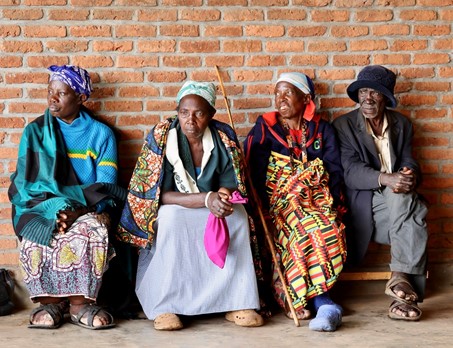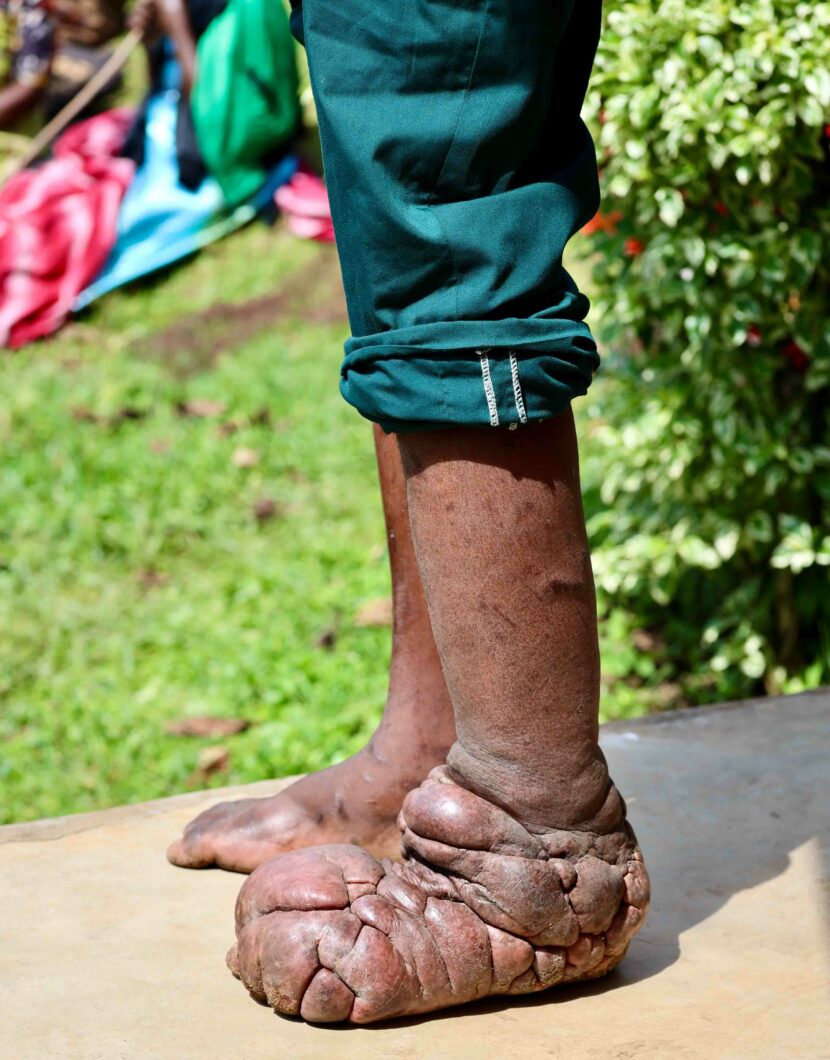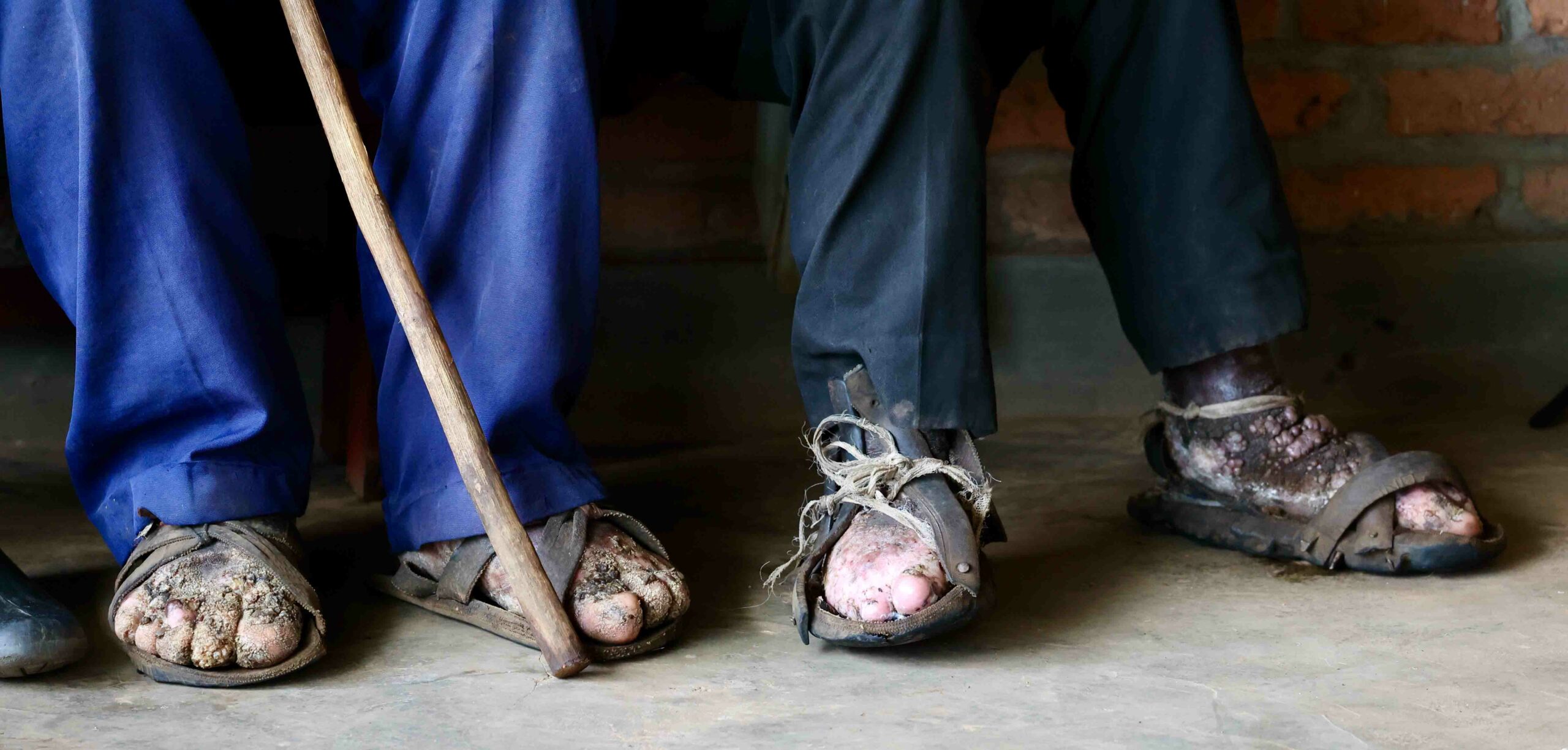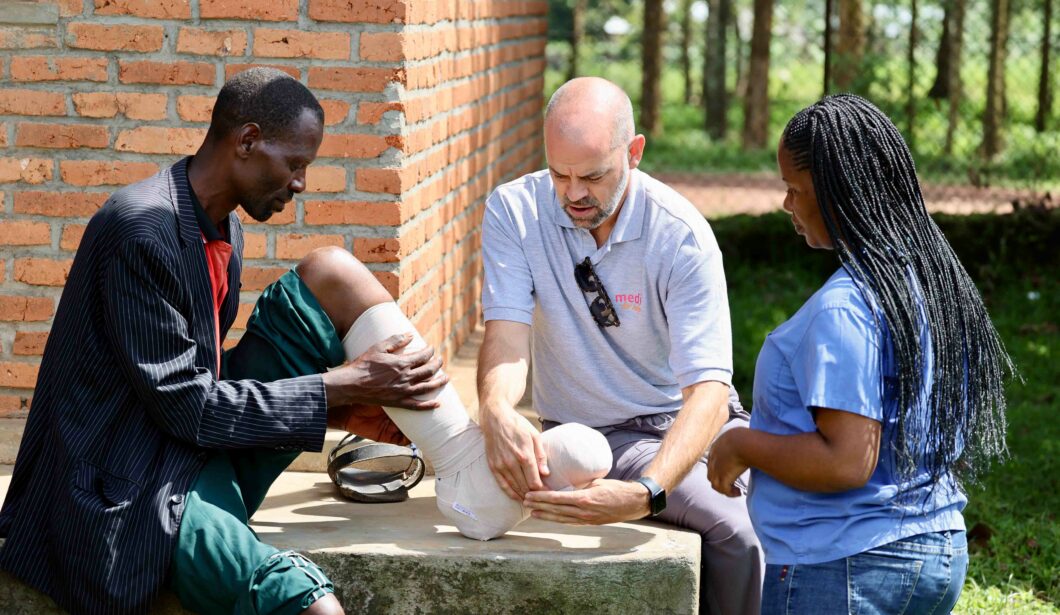
New challenge for medi for help: podoconiosis
Elephantiasis is abnormal enlargement of a body part caused by lymphatic congestion. Besides lymphatic filariasis, which is triggered by a parasite infection, non-infectious podoconiosis is the second major cause of elephantiasis in tropical countries. According to the WHO, it is one of the most neglected diseases in the world (neglected tropical disease). Both disease types occur disproportionately often in poorer countries or population groups and therefore receive less attention and support from research or health policy than diseases that are common in developing countries. In the future, medi for help wants to help affected people to combat this neglected, but still serious disease.
What are the features of “podo” and where does it occur?

Podoconiosis (podo) is a form of tropical lymphoedema with bilateral swelling of the feet up to the knees, with asymmetric lymphoedema. Filariasis, on the other hand, can start anywhere on the leg and usually appears as a unilateral swelling above the knee, especially in the groin.
There is some evidence that podo is the result of a genetic, inflammatory response to mineral particles in red clay soils of volcanic rock. These microparticles penetrate the skin of people who walk barefoot and lead to an inflammatory process with subsequent oedema and fibrosis, resulting in congestion of the lymphatic system.
Podo occurs in highland areas of tropical Africa, Central America and northwest India – at altitudes of more than 1,000 metres above sea level with high seasonal rainfall. Men and women are usually equally affected, with farmers and mine workers in particular, who do not wear shoes for cultural reasons or simply poverty, being at particularly high risk.
Surveys of populations walking barefoot on such surfaces identified a five to ten percent prevalence in the described population.
Stigmatisation of people with podoconiosis is high: patients are excluded from school, local gatherings, churches and mosques, and from marrying non-affected people.

Prevention and treatment of podoconiosis
The most important preventive measure for podo is eliminating or minimising direct contact with the soils that cause the disease, and protecting the feet and legs through the wearing of shoes or boots and the covering of floor areas in traditional huts.
Secondary prevention involves a simple lymphoedema treatment regimen, specifically daily foot washing with soap, water and antiseptic, using skin care products, controlled exercises and wearing socks and shoes. Compression therapy combined with an elevated leg has been shown to be very effective in reducing the amount of swelling.

In advanced elephantiasis, treatment includes continuous and defined compression of the affected leg and elevation, in addition to the measures mentioned above. Rehabilitation into social environments is very important. Bringing families together through education is as important as further education. It is also important to raise awareness of how to make a living without having direct contact with the dust particles.
Source:
World Health Organization (WHO). Published online at:
https://www.who.int/teams/control-of-neglected-tropical-diseases/lymphatic-filariasis/podoconiosis-endemic-non-filarial-elephantiasis (Last accessed: 03/02/2023)